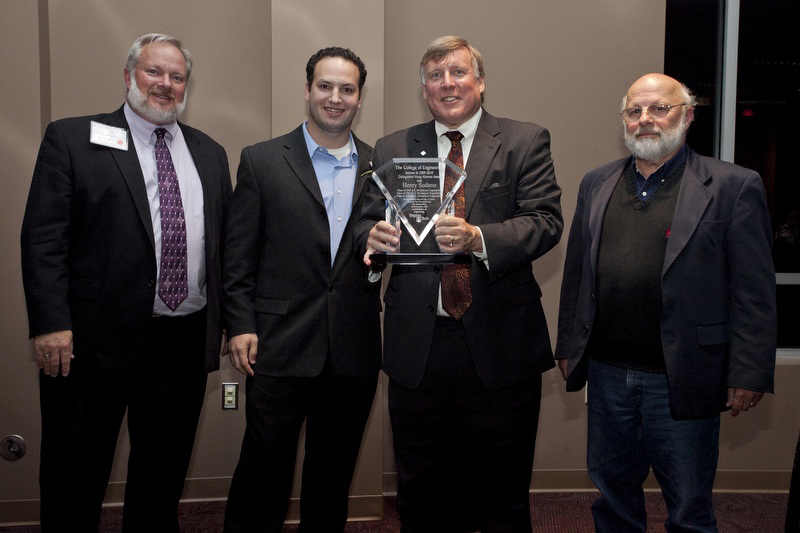Henry Sodano named university's Outstanding Young Engineering Alumnus

Henry Sodano, an assistant professor in the mechanical and aerospace engineering department at Arizona State University (ASU), has been named Virginia Tech's College of Engineering's Outstanding Young Alumnus.
“I wanted to do my degrees at the top engineering (school) in Virginia, and that’s how I ended up going to Virginia Tech,” Sodano said. He earned three degrees from the College of Engineering: A bachelor’s, master’s and doctoral, all in mechanical engineering, in 2002, 2003, and in 2005, respectively.
Along the way, Sodano picked up a mentor in Dan Inman, holder of the G.R. Goodson Professor chair and director of the Center for Intelligent Material Systems and Structures at Virginia Tech. “I met him in an undergraduate vibrations class, and I really enjoyed him as a teacher and started to organize my graduate degrees with him as my adviser,” Sodano said. “Then I completed my master’s in a year, and so I decided to stay on and earn a Ph.D.”
The impression was mutual. “Henry was great student,” Inman said. “He impressed me to the point that I hired him to work in our lab as an undergraduate researcher the summer between his junior and senior year. He did so well, I hired him while he was a graduate student. He worked, and still does, extremely hard. He also has a great vision for new problems and completely defined his own Ph.D. topic. He is a very creative guy with a very down to earth approach to solving technical problems.”
Sodano worked with Inman when the latter ventured into energy harvesting, which involves culling energy from environmental sources such as light, temperature gradients, wind, and vibrations. For instance, while jogging, a runner can power his or her MP3 player through an energy-emitting sensor strapped to their leg or a backpack that produces electricity. A project the two jointly worked on involves bridge safety monitors “powered” by the vibrations of the bridge itself, as cars and trucks pass overhead.
While at Virginia Tech, Sodano received the NASA Graduate Student Research Program Fellowship in 2003, was awarded the prestigious Directors Funded Post Doctoral Fellowship at Los Alamos National Laboratories, earned the best paper at Society for the Advancement of Material and Process Engineering’s 2008 fall technical conference, received the Paul E. Torgersen Research award at Virginia Tech in 2004 and 2005, and was selected in 2007 for the U.S. Air Force Research Laboratory’s Air Vehicles Directorate Summer Faculty Program.
Sodano joined the faculty at Arizona State in 2007, having previously served as an assistant professor at Michigan Technological University. He has published roughly 90 technical articles since 2002 (five book chapters, 38 refereed journals and 43 proceedings) and serves as an associate editor of two archival journals: Smart Materials and Structures and the Journal of Intelligent Material Systems and Structures.
He also was awarded ASU’s 2009 Faculty Achievement Award for Defining Edge Research. In 2009, he was awarded a $400,000 National Science Foundation’s CAREER award, an honor given to creative junior faculty likely considered to become academic leaders of the future. The research grant will fund the study on the influence of the nanowire interphase on the mechanical and multifunctional properties of a fiber reinforced composite, in this case a ceramic interface.
“We grow a ceramic nanowire layer on the surface of a reinforcing fiber which greatly increases the interfacial strength leading to lighter weight and stronger composite materials,” Sodano says.
Arizona State says the research could have broad medical implications, including improved prosthetic and biological implants.



